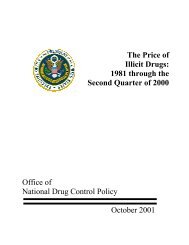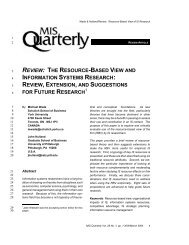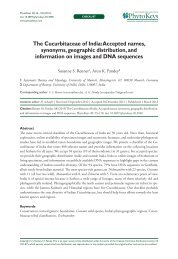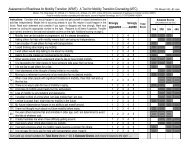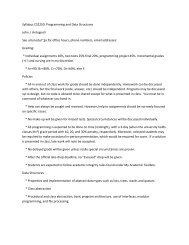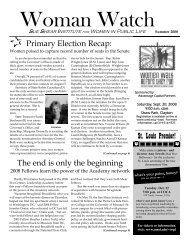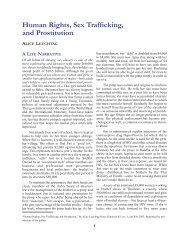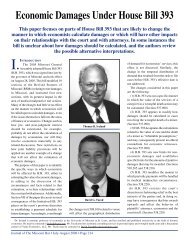an analysis of parole decision making using a sample of sex offenders
an analysis of parole decision making using a sample of sex offenders
an analysis of parole decision making using a sample of sex offenders
You also want an ePaper? Increase the reach of your titles
YUMPU automatically turns print PDFs into web optimized ePapers that Google loves.
8 HUEBNER F.DOC 11/1/2006 8:49:12 AM<br />
PAROLE DECISION MAKING 989<br />
APPENDIX B. ELEMENTS OF THE PAROLE<br />
READINESS SCORE<br />
ACTIVE SENTENCE SCORE<br />
Aggravating conditions include: (1) weapon or threat <strong>of</strong> weapon, (2)<br />
serious force or injury, (3) property loss or damage > $5,000, (4) excessive<br />
violence or cruelty, (5) <strong>sex</strong>ual <strong>of</strong>fense; (6) victim tr<strong>an</strong>sported or held<br />
captive, (7) multiple victims, (8) victim unusually vulnerable, (9) <strong>of</strong>fender<br />
was leader, (10) designated career criminal, (11) designated drug<br />
trafficker, <strong>an</strong>d (12) designated org<strong>an</strong>ized crime.<br />
Mitigating factors include: (1) situational crime; (2) <strong>of</strong>fender played<br />
minor role in the crime.<br />
PRIOR CRIMINAL RECORD SCORE<br />
The elements that make up a criminal record include: (1) number <strong>of</strong><br />
adult assaultive misdeme<strong>an</strong>ors, (2) number <strong>of</strong> jail sentences, (3) number <strong>of</strong><br />
felony convictions, (4) number <strong>of</strong> assaultive felony convictions, (5)<br />
number <strong>of</strong> prison terms, (6) number <strong>of</strong> probation or <strong>parole</strong> failures, (7) on<br />
probation or <strong>parole</strong> at the time <strong>of</strong> the <strong>of</strong>fense, (8) number <strong>of</strong> juvenile<br />
incarcerations, <strong>an</strong>d (9) number <strong>of</strong> terms on juvenile probation.<br />
CONDUCT SCORE<br />
The conduct score is based on (1) the number <strong>of</strong> misconduct reports in<br />
the last 5 years; (2) the number <strong>of</strong> misconduct reports in the last year; (3)<br />
the number <strong>of</strong> assault, <strong>sex</strong>ual misconduct, homicide, or riot misconducts in<br />
the last 5 years; (4) the number <strong>of</strong> security reclassification increases in the<br />
last 5 years; <strong>an</strong>d (5) the number <strong>of</strong> security reclassification increases in the<br />
last year.<br />
STATISTICAL RISK SCORE<br />
Risk is designated by the department <strong>of</strong> corrections based on a security<br />
classification screening instrument that includes measures <strong>of</strong>: (1) number<br />
<strong>of</strong> past assaultive felony convictions, (2) juvenile or adult escape attempts,<br />
(3) dishonorable discharge from the military, (4) major pending felony<br />
charges or detainer, (5) identification as a homo<strong>sex</strong>ual predator, <strong>an</strong>d (6)<br />
classified to administrative segregation in past 3 years.<br />
AGE SCORE<br />
Inmates are r<strong>an</strong>k ordered based on the following age categories: < 22,<br />
23 <strong>an</strong>d 24, 25–27, 28–30, 31–35, 36–40, 41–50, 50+.<br />
PROGRAM PERFORMANCE SCORE<br />
Participation in work, school, <strong>an</strong>d therapy are assessed <strong>using</strong> five<br />
criteria: (1) no inadequacies, (2) more adequate th<strong>an</strong> inadequate, (3)




